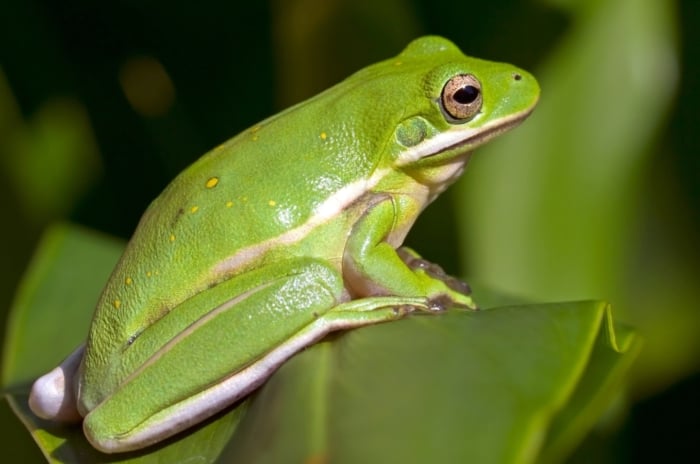How to Winterize Your Garden Pond in 5 Steps
Water features like ponds add an extra layer of interest to backyards and allow you to grow unique aquatic plants. However, garden ponds also require specific winter care. Join farmer Briana Yablonski to learn how to prepare your pond for the cold days ahead.
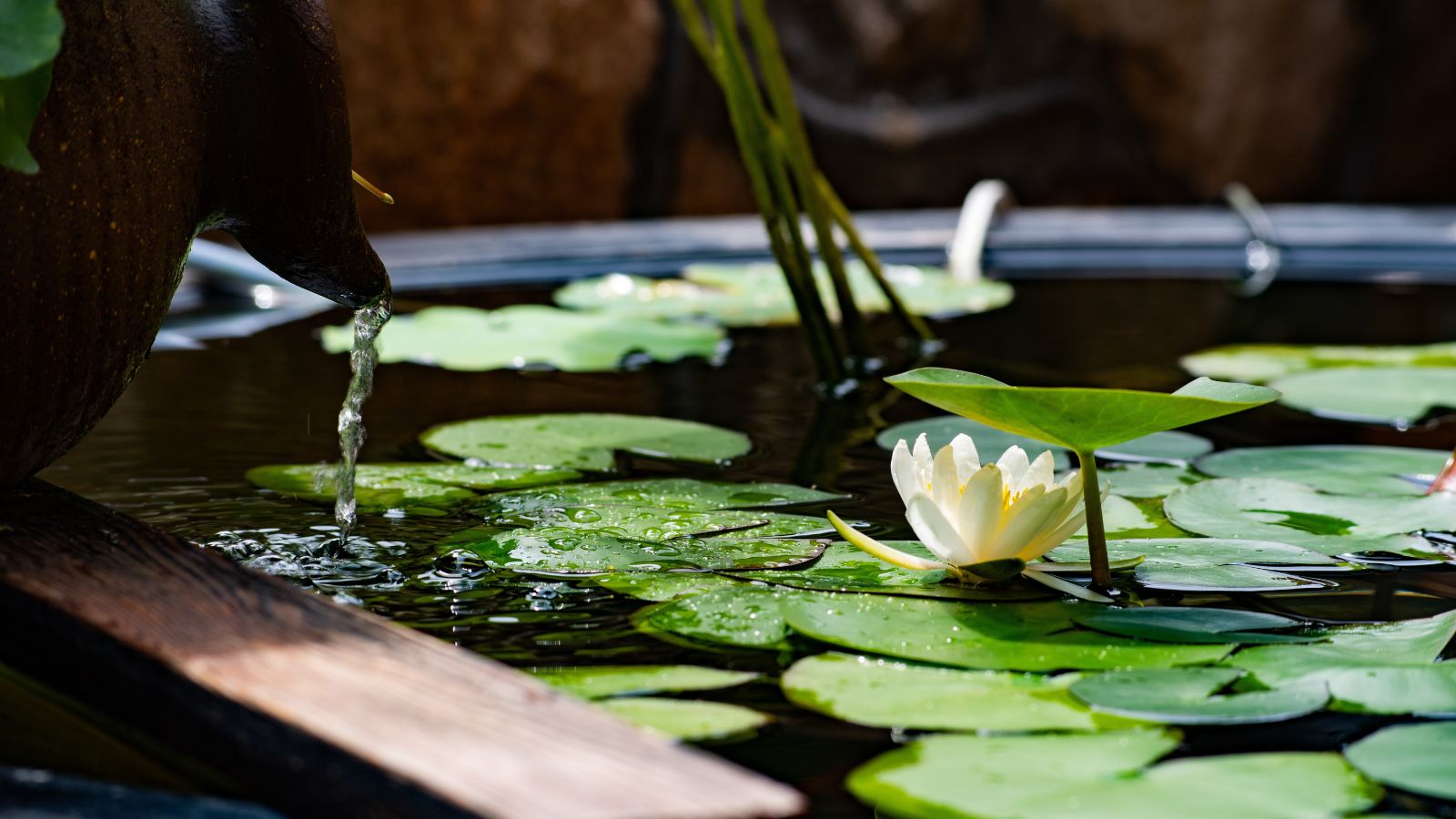
Contents
When I was a preteen, I didn’t ask for a nail polish set or the latest pop CD. Instead, I slowly convinced my parents that our backyard needed a pond complete with a waterfall and stream.
When I was younger, we had a small pond for goldfish, but a garden makeover prompted my parents to drain the water and remove the pre-formed plastic base. After a few years without a water feature for frogs and birds to flourish, I was ready to attract these critters back to the garden. After several months of convincing my dad to help me tackle the project, we built a freeform pond and waterfall. The end result added the relaxing sound of flowing water and created a habitat for all sorts of animals.
As I grew older, I realized this new garden feature required extra work. I learned how to fight algae in the summer, find the source of leaks in the spring, and winterize the pond for the coldest months in the garden. If you have a new garden pond, follow along to learn how to winterize it.
Know Your Location

How you winterize your garden pond largely depends on where you reside. If you live in growing zone 8 or 9, you don’t have to worry about the water turning into a thick layer of ice. However, that’s a real concern in zones 6 and below. Therefore, your location impacts how you should deal with pumps.
How you treat your plants also depends on where you live and what aquatic plants you’re growing. For example, lotus and pickerelweed can survive the cold months outdoors in most areas as long as your pond is deep enough. However, plants like mosaic flowers are more sensitive to cold.
The moral of the story? Know your location and its low temperatures before you begin the winterizing process.
Remove Debris
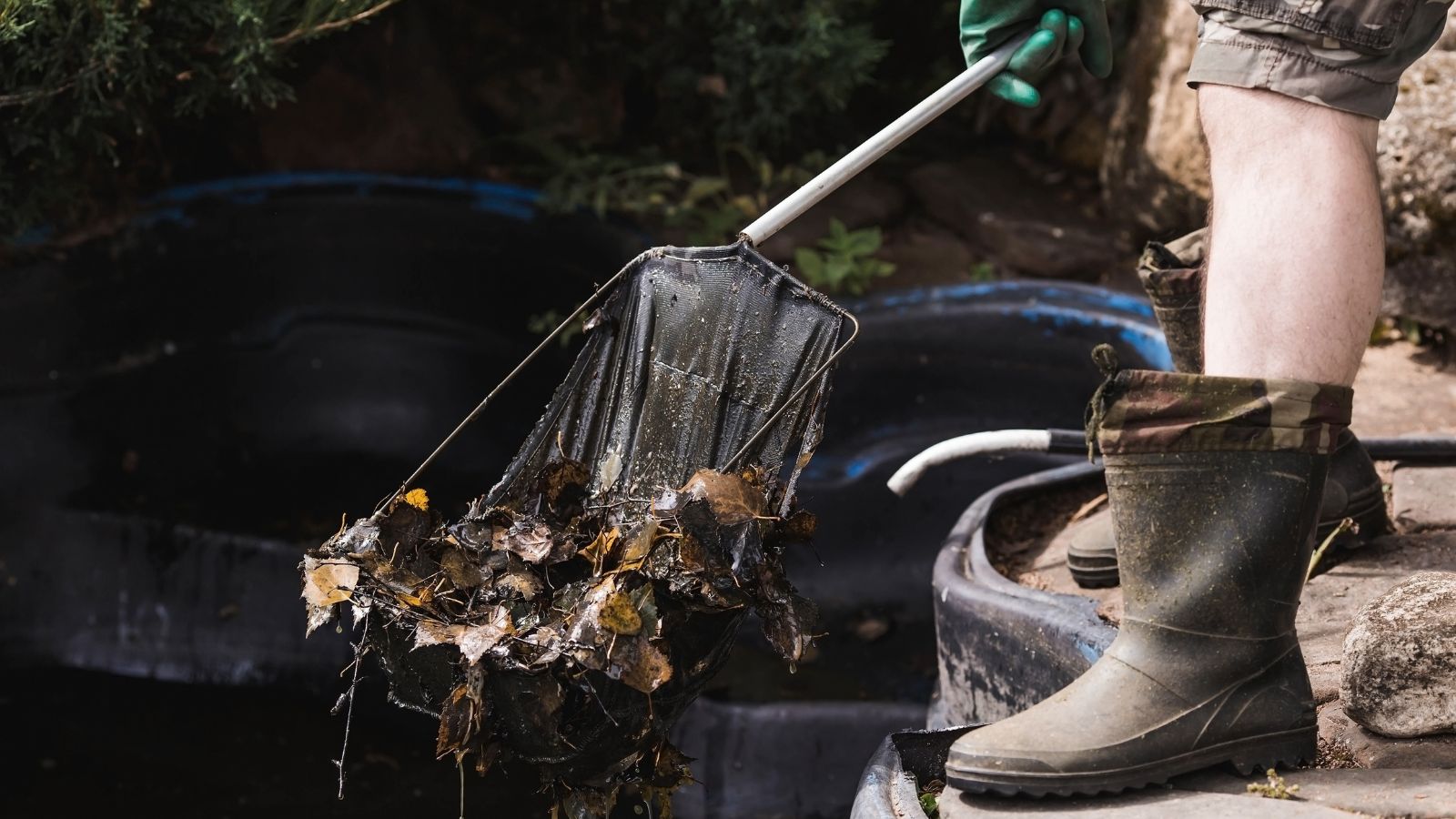
The first step in preparing your pond for cold weather is cleaning it well. Use a net to remove large objects like sticks and fallen leaves. Make sure to skim along the bottom where debris may have settled. Dispose of these organic materials or place them in your compost pile.
While it isn’t necessary, you can also use a siphon to remove layers of scum that have collected near the bottom of the pond. However, if you have overwintering aquatic reptiles or amphibians, make sure to leave a layer of mud where they can spend the winter.
Prune Plants
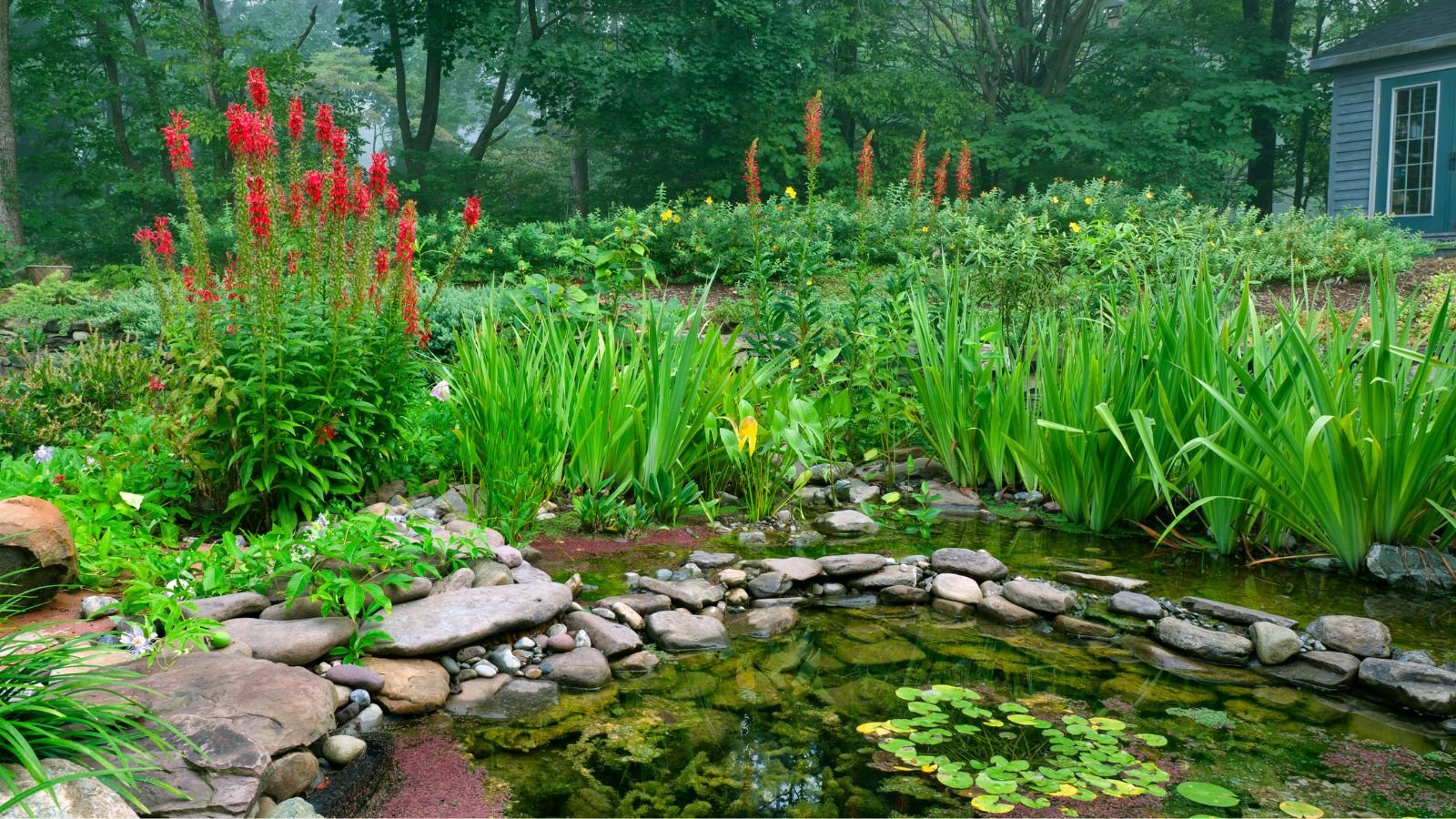
Now it’s time to prune your aquatic plants. Remove any dead or dying foliage using your hands or a pair of pruning shears. You should also prune healthy tissue on cold-hardy aquatic plants so only a few inches of stem remain. This will help prevent the tissue from dying and rotting in the frigid weather.
If you have plants that aren’t hardy in your area, you should remove them from your pond. Leaving them in place will lead to dead plants and poor water quality. You can either dispose of the plants or keep them in a water-filled bucket in a warmer location.
Late fall and early winter are also great times to prune water-loving plants near your pond’s edges. Remove dead or dying leaves and stems, then trim perennials like milkweed and cardinal flower, so the stems are 6-12 inches above the ground. This pruning will encourage the plants to produce healthy new growth the following year.
Stop Feeding Fish
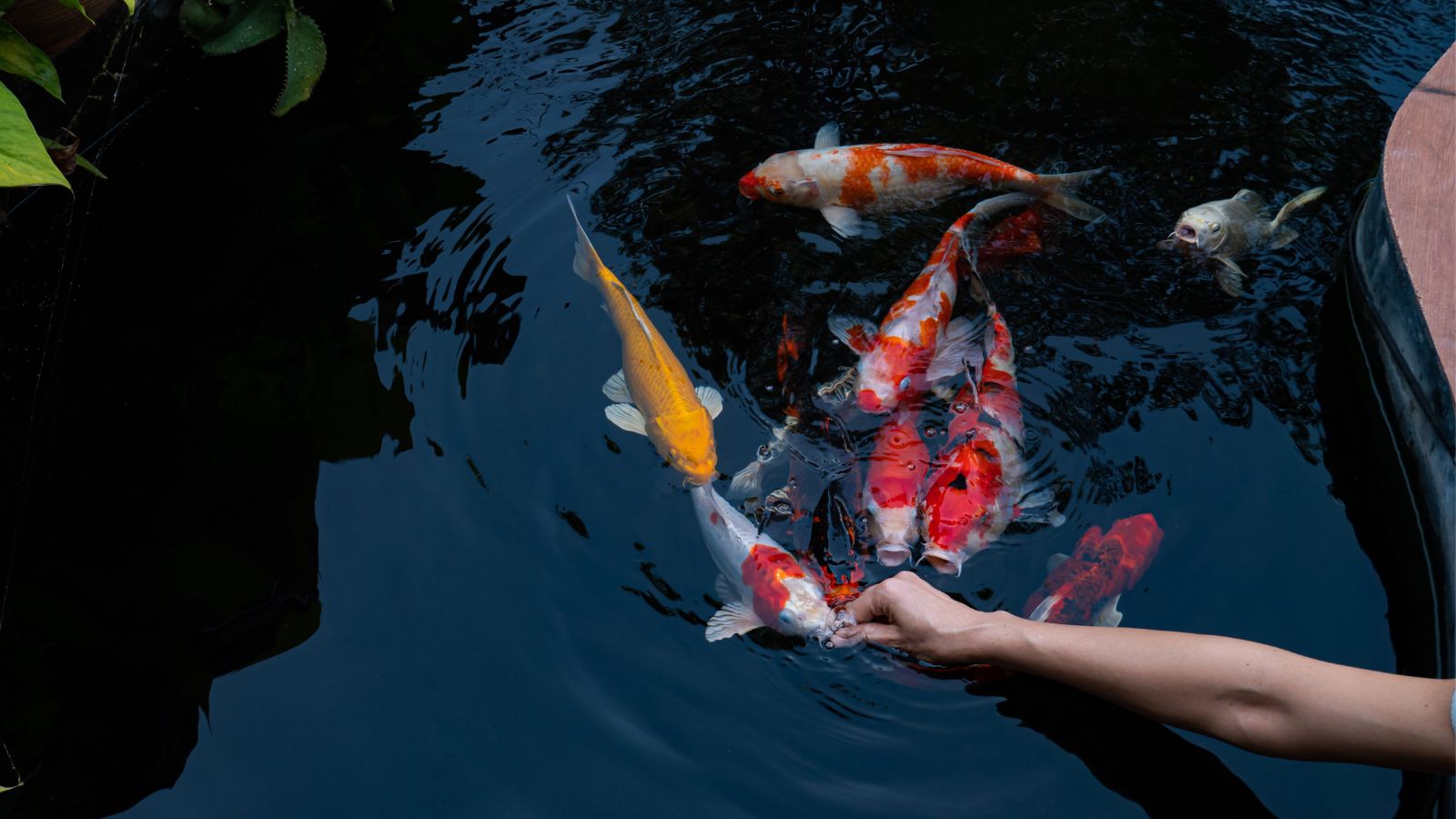
If you have fish, you should switch their food or stop feeding them when cooler weather arrives. Protein is more difficult for fish to digest, so switch to a protein-free food like wheat germ when the water temperature dips below 60°F (16°C).
When the water dips below 50°F (10°C), your fish have severely slowed their metabolisms. Therefore, you should stop adding food of any kind. If you continue adding food when fish have slowed metabolisms, they can die due to improper digestion.
Prepare or Remove Pumps
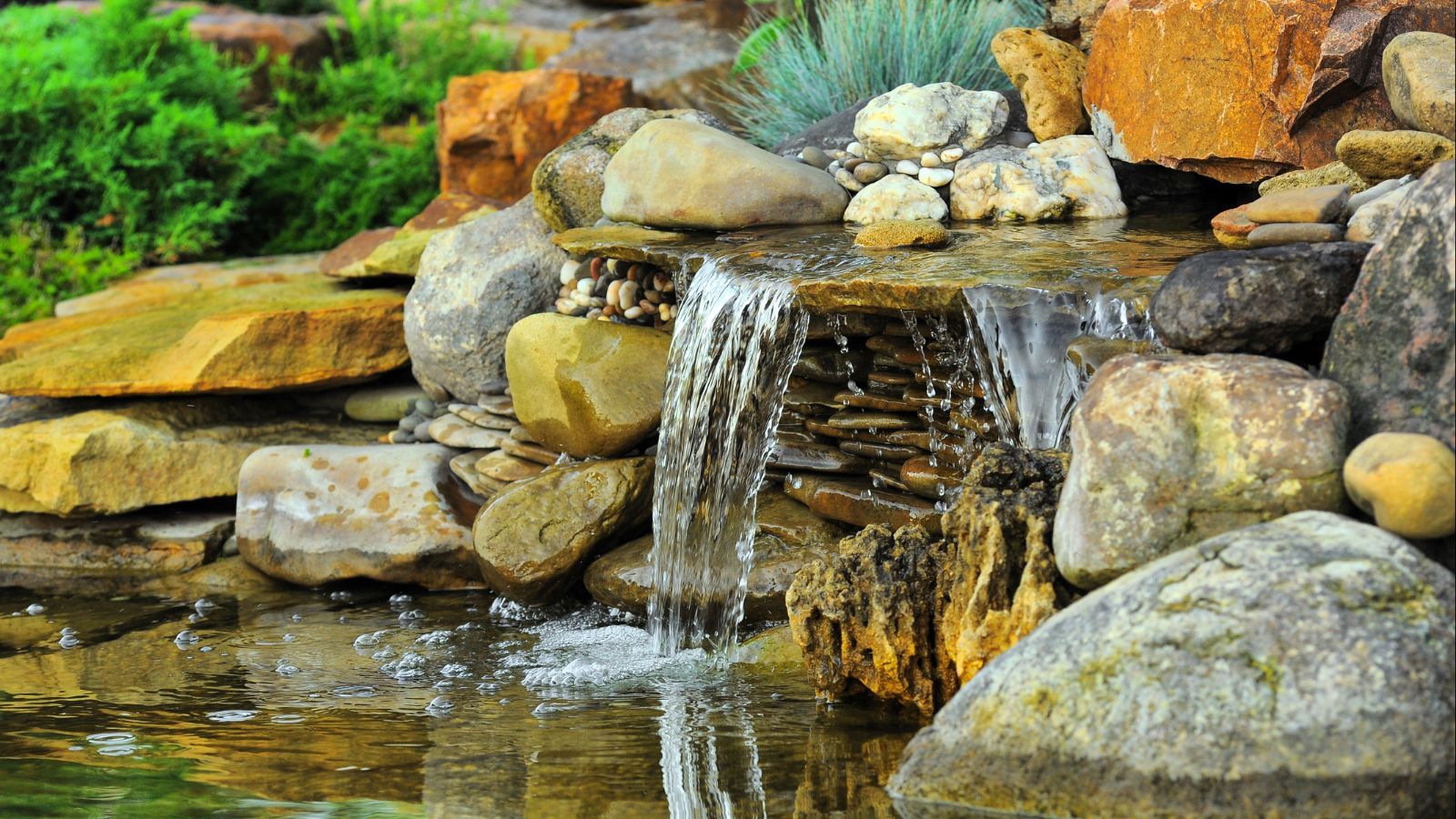
If you have a pump for a waterfall, fountain, or aeration, you can leave the pump running or remove it for storage. There are pros and cons to each method, so it’s up to you to decide which option works best. If you’re unsure, consider these factors.
Run the Pump Throughout Winter
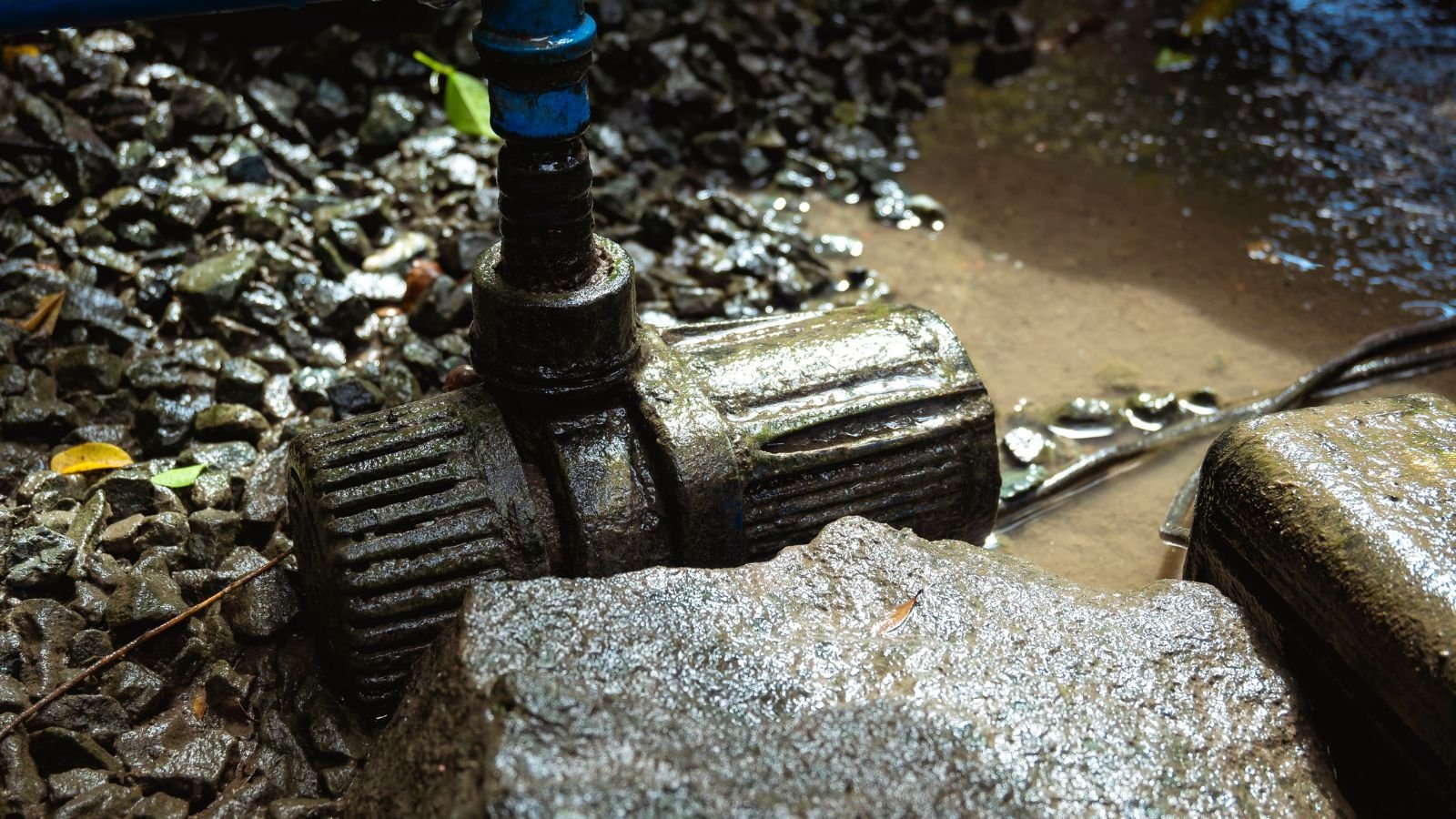
If you have an appropriate frost-proof pump and/or live in a warmer area, you can safely run your pump throughout the winter. This prevents you from buying other equipment, such as pond heaters and oxygenators.
Cons:
- Running water can splash and freeze, leading to lower water levels. If you have a pond skimmer, the decreased water volume can cause the pump to suck in air and develop problems.
- Pumps that are not frost-proof are susceptible to damage if you run them in below-freezing temperatures.
- Water-filled pipes can freeze and burst in the winter.
Pros:
- Running water is less likely to completely freeze, allowing an opening in the top of the water, which is crucial for gas exchange.
- The pump will provide oxygenation for plants, fish, and beneficial microorganisms.
If you want to continue running your pump, ensuring it runs smoothly is important. You should also check the water level and lines at least once a week during cold weather. Be ready to add extra water and remove ice blockages as necessary.
Remove the Pump
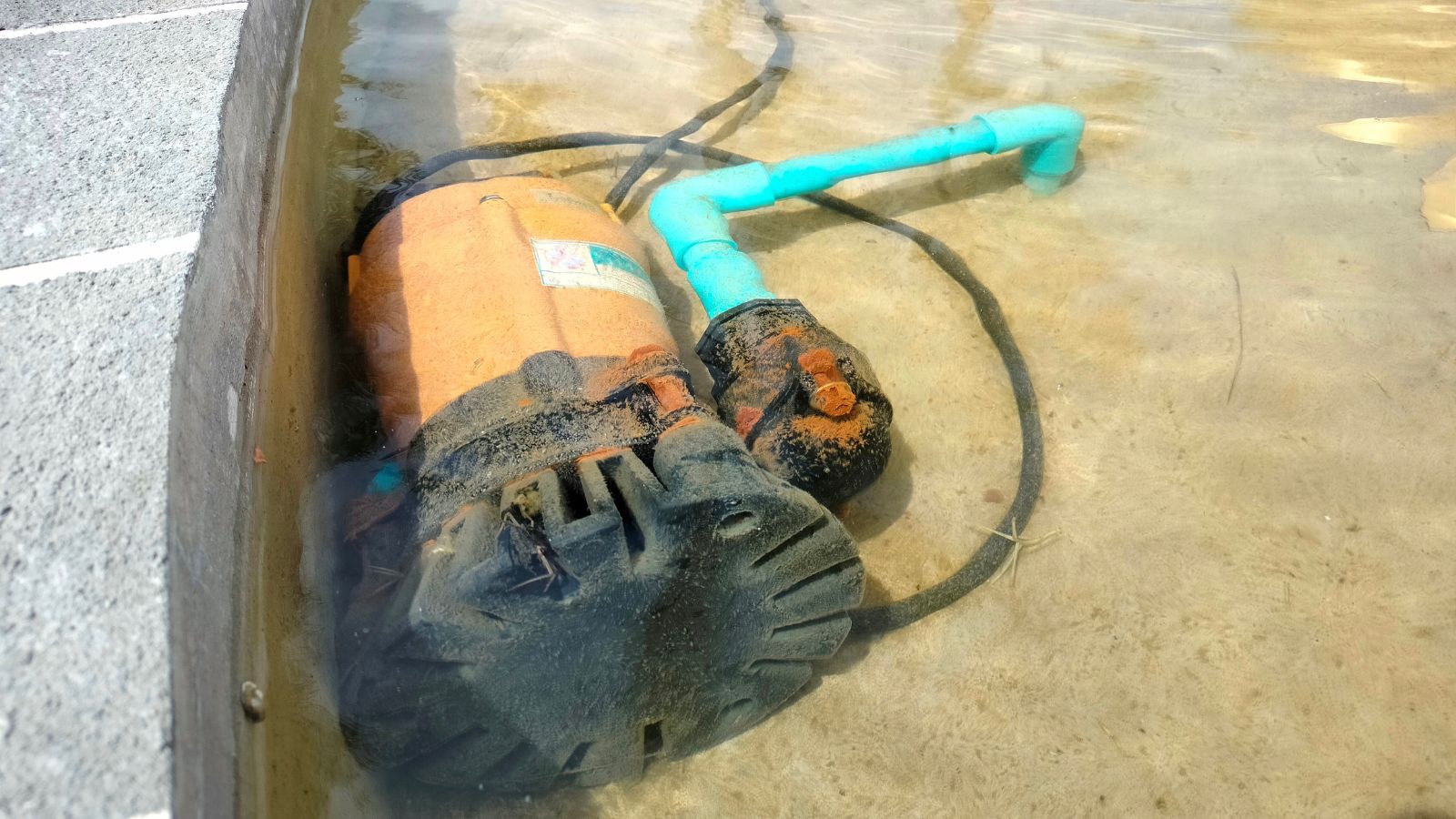
Removing your pump for a winterized garden pond is often the best option if you have a cold-sensitive pump or are worried about freezing pipes and increased energy usage. Here are some pros and cons of letting your pump rest:
Cons:
- Standing water is more likely to freeze completely, so you may need to add a heater and/or aerator to your pond to prevent it from freezing.
- Removing and then reinstalling the pump requires a bit of extra work.
- A lack of moving water limits oxygenation and requires the addition of an oxygenator for proper aeration.
Pros:
- Removing and properly storing the pump removes the risk of potential cold damage.
- Storing the pump prevents wear and tear caused by running it in cold weather.
- When you store your pump, there’s no need to check on it throughout the winter. Therefore, this is a great option if you plan to travel.
If you decide you want to remove the pump, do so before your pond starts to freeze. Remove it, clean any debris, then place it in a large bucket of water to prevent damage to seals. Keep the bucket in a spot that remains above freezing.
Add Heaters and Aerators
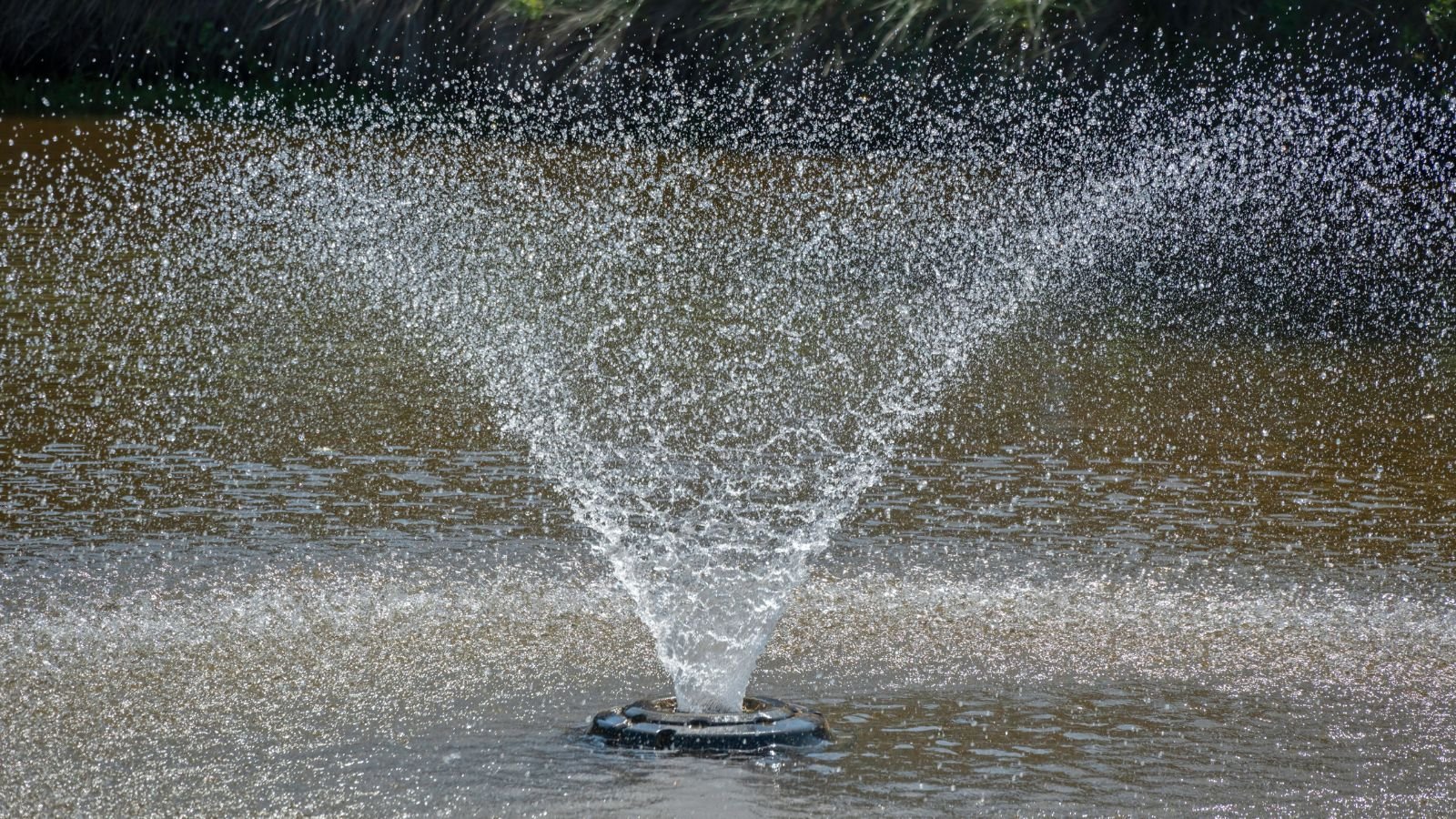
If you removed your pump to winterize your pond, and live in an area where the water may freeze, you should ensure the top of the water doesn’t completely freeze. Maintaining an open area allows for gas exchange, which is necessary for plants and fish to survive. If the entire pond ices over, toxic gasses can build up and cause stress on living creatures.
The heater or deicer doesn’t have to prevent the entire pond from freezing. Rather, it should simply maintain a small open area that allows for gas exchange to occur.
Adding air stones or another type of aerator to your pond helps keep oxygen levels in the right range. This helps both plants and fish remain healthy.
Frequently Asked Questions
How Do I Keep My Pond Fish Alive in Winter?
Although pond fish can tolerate cold temperatures, they need unfrozen water and oxygen to survive. Adding a pond heater and an aerator will help them survive the colder months.
What Pond Plants Survive the Winter?
Cold-hardy aquatic plants that can survive the winter outdoors include hardy water lilies, purple pitcher plants, pickerel weed, and marsh marigolds.
How Can I Keep My Garden Pond Warm in the Winter?
You use a pond heater or de-icer to prevent your pond from freezing and keep the water warm. Some of these products float on the water, and others are submersible. Just make sure to select a product appropriate for your pond’s size.


